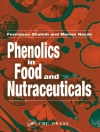Filling a real knowledge gap, this handbook and ready reference is both modern and forward-looking in its emphasis on the ‘bench to bedside’ translational approach to drug development.
Clearly structured into three major parts, the book stakes out the boundaries of peptide drug development in the preclinical as well as clinical stages. The first part provides a general background and focuses on the characteristic strengths and weaknesses of peptide drugs. The second section contains five cases studies of peptides from diverse therapeutic fields, and the lessons to be learned from them, while the final part looks at new targets and opportunities, discussing several drug targets and diseases for which peptide drugs are currently being developed.
表中的内容
Preface
PART I: The Academia –
Market Bouncing of Peptide Drugs –
Challenges and Strategies in Translational Research with Peptide Drugs
PEPTIDES AS LEADS FOR DRUG DISCOVERY
Introduction
Overview of Process for Transforming Peptides to Peptidomimetics
HCMV Protease
HCV Protease
Herpes Simplex Virus
Renin
HIV
Conclusions
MARKETING ANTIMICROBIAL PEPTIDES: A CRITICAL ACADEMIC POINT OF VIEW
Introduction
Basic Research: Antimicrobial Peptides
Patents
Potential Applications of AMPs
Technology Transfer: Valorization, Licensing, or Spin-Off Creation
Spin-Off Creation: An Academic Point of View
ORAL PEPTIDE DRUG DELIVERY: STRATEGIES TO OVERCOME CHALLENGES
Introduction
Challenges Associated with Oral Petide Delivery
Strategies to Overcome the Barriers of the Gastrointestinal Tract
Conclusions
RATIONAL DESIGN OF AMPHIPATHIC ALPHA-HELICAL AND CYCLIC BETA-SHEET ANTIMICROBIAL PEPTIDES: SPECIFICITY AND THERAPEUTIC POTENTIAL
Introduction to Antimicrobial Peptides
Antimicrobial and Hemolytic Activities of Amphipathic Alpha-Helical Antimicrobial Peptides: Mechanisms and Selectivity
Structure-Activity Relationship Studies of Amphipathic Alpha-Helical and Cyclic Beta-Sheet Antimicrobial Peptides: Optimization of Pathogen Selectivity and Prevention of Host Toxicity
Commercialization of Antimicrobial Peptides
Therapeutic Potential
CONOTOXIN-BASED LEADS IN DRUG DESIGN
Introduction
Conotoxin Classification and Targets
Conotoxins as Drug Leads
Conclusions
PLANT ANTIMICROBIAL PEPTIDES: FROM BASIC STRUCTURES TO APPLIED RESEARCH
Introduction
The Diversity of Plant Antimicrobial Peptides: Focusing on Tissue Localization and Plant Species Distribution
Possible Structural Folds Found in Plant AMPs to Date
New Biotechnological Products Produced from Plant Peptides
PART II: Peptide Drugs’ Translational Tales –
Peptide Drugs Before, Through and After Industry Pipelines
OMIGANAN PENTAHYDOCHLORIDE: A NOVEL, BROAD-SPECTRUM ANTIMICROBIAL PEPTIDE FOR TOPICAL USE
Omiganan: A Novel Anti-Infective Agent for Topical Indications
Structure and Mechanism of Action
Spectrum of Activity
Preclinical Efficacy Studies
Preclinical Toxicology Studies
Clinical Studies
Conclusions
TURNING ENDOGENOUS PEPTIDES INTO NEW ANALGESICS: THE EXAMPLE OF KYOTORPHIN DERIVATIVES
Introduction
Peptides as Future Drug Candidates
Central Nervous System Anagesic Peptides
Endogeneous Opioid Systems
Strategies to Deliver Analgesic Peptides to the Brain
Development of New Opioid-Derived Peptides
Kyotorphin –
The Potential of an Endogenous Dipeptide
New KTP Derivatives
Assessing BBB Permeability with Peptide –
Membrane Partition Studies
Kyotorphines: Partition to the Membrane and Enhanced Analgesic Activity
Academia and Pharmaceutical Industry: Friends or Foes?
THE DEVELOPMENT OF ROMIPLOSTIM –
A THERAPEUTIC PEPTIBODY USED TO STIMLATE PLATELET PRODUCTION
Introduction
Thrombopoietin and c-Mpl
Discovery and Optimization of Romiplostim
Pharmacodynamics (PD) and Pharmacokinetics (PK) of Romiplostim
A Brief ITP Primer
Romiplostim Clinical Data
Safety and Other Insights Gained from Romiplostim Design and Development
HIV VS HIV: TURNING HIV-DERIVED PEPTIDES INTO DRUGS
Introduction
HIV-1 Envelope Protein
HIV Entry and Its Inhibition
HIV-1 Fusion Inhibitors: From Bench to Clinical Administration
New Strategies for Creating New HIV Fusion Inhibitor Peptides
Drug-Resistance and Combination Therapy
Concluding Remarks
SIFUVIRTIDE, A NOVEL HIV-1 FUSION INHIBITOR
Ideal Drug Target HIV-1 pg41
Structure-Based Drug Design of Sifuvirtide
High Potency of Sifuvirtide
Limited Drug Resistance
Enhancement of the Efficiency of Sifuvirtide by Biomembrane Selectivity
Pharmacokinetics of Sifuvirtide with Long Half-Life
Stratification of Monotherapy
20 mg Sifuvirtide Once Daily vs. 100 mg T10 Twice Daily
Conclusions and Discussion
PART III: Whither Peptide Drugs? Peptides Shaping the Future of Drug Development
ENDOGENOUS PEPTIDES AND THEIR RECEPTORS AS DRUG DISCOVERY TARGETS FOR THE TREATMENT OF METABOLIC DISEASE
Centrally Secreted Neuropeptide Systems
Peripherally Secreted Neuropeptides
Summary
TRANSLATION OF MOTILIN AND GHRELIN RECEPTOR AGONISTS INTO DRUGS FOR GASTROINTESTINAL DISORDERS
Introduction
Motilin and Ghrelin Receptor Agonists Under Development
Translational Value of Preclinical Assays
Clinical Translation: Selecting the ‘Right’ Patient Population
Clinical Development of Motilin and Ghrelin Receptor Agonists
Conclusions
OF MICE AND MEN: TRANSLATIONAL RESEARCH ON AMYLIN AGONISM
Overview of Amylin Physiology
Pramlintide: An Amylin Agonist
Amylin Agonism: Translational Research in Insulin-Dependent Diabetes
Amylin Agonism: Translational Research in Obesity
PEPTIDES AND POLYPEPTIDES AS IMMUNOMODULATORS AND THEIR CONSEQUENTIAL THERAPEUTIC EFFECT IN MULTIPLE SCLEROSIS AND OTHER AUTOIMMUNE DISEASES
Introduction
Peptides as Antigens and Vaccines
Peptides as Immunomodulators
Development of Copolymer 1 –
A Polypeptide Immunomodulator Drug for the Treatment of Multiple Sclerosis
Additional Immunomodulatory Peptides as Drug Candidates
Summary and Concluding Remarks
DEVELOPMENT OF ANTIBODY FRAGMETNS FOR THERAPEUTIC APPLICATIONS
Antibodies
Conclusions
关于作者
Miguel Castanho is head of the Biochemistry department of the School of Medicine at the University of Lisbon (Portugal). He also leads the Physical Biochemistry research unit at the Institute of Molecular Medicine. His main field of research is the interaction of peptide drugs with lipids, in particular the role of lipid membranes in the mechanism of action of peptide drugs.
Nuno C. Santos is the leader of the Biomembranes Unit of the Institute of Molecular Medicine. His research is centered on the specific functions of biological membranes lipids and proteins, with a special focus on their relevance for pathologic processes ranging from viral or bacterial infection to cardiovascular diseases.
Together, Miguel Castanho and Nuno C. Santos have been involved in many collaborative drug discovery and development projects with industry partners in Europe, USA, Canada, and China.












